There are a negligible number of full-length painter sculptures in Budapest, so no conclusions can be drawn based on this, either about the painters' publicity or their significance.
In front of the InterContinental Hotel on Danube Promenade, you can see Ignác Roskovics (Szalók, 28 September 1854 - Budapest, 29 November 1915) life-size statue, who was put into the spotlight in recent years by his ecclesiastical and historical works in connection with the renovation of the rediscovered St. Stephen's Hall. Mihály Kolodko's imaginative work, inaugurated in 2014, depicts the painter just during his work, with an easel, a brush, a canvas and a cigarette in his hand. And the work in progress could not be other than the view of the cityscape, the Chain Bridge. As a witty solution, you can read a summary of the painter’s significance written on the bag at his feet.
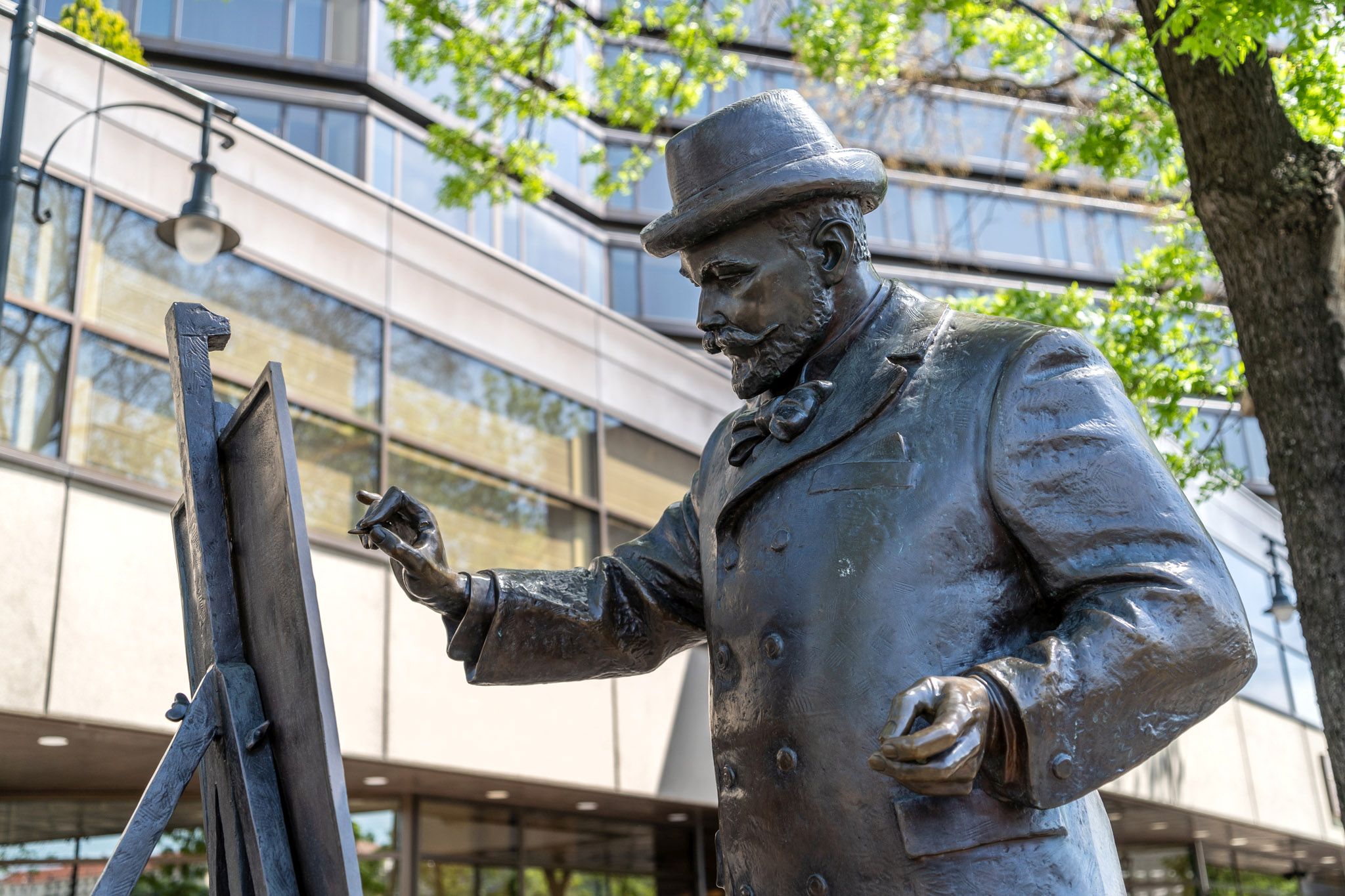 Statue of Ignác Roskovics erected in 2014 on the Danube Promenade, by Mihály Kolodko (Photo: Balázs Both / pestbuda.hu)
Statue of Ignác Roskovics erected in 2014 on the Danube Promenade, by Mihály Kolodko (Photo: Balázs Both / pestbuda.hu)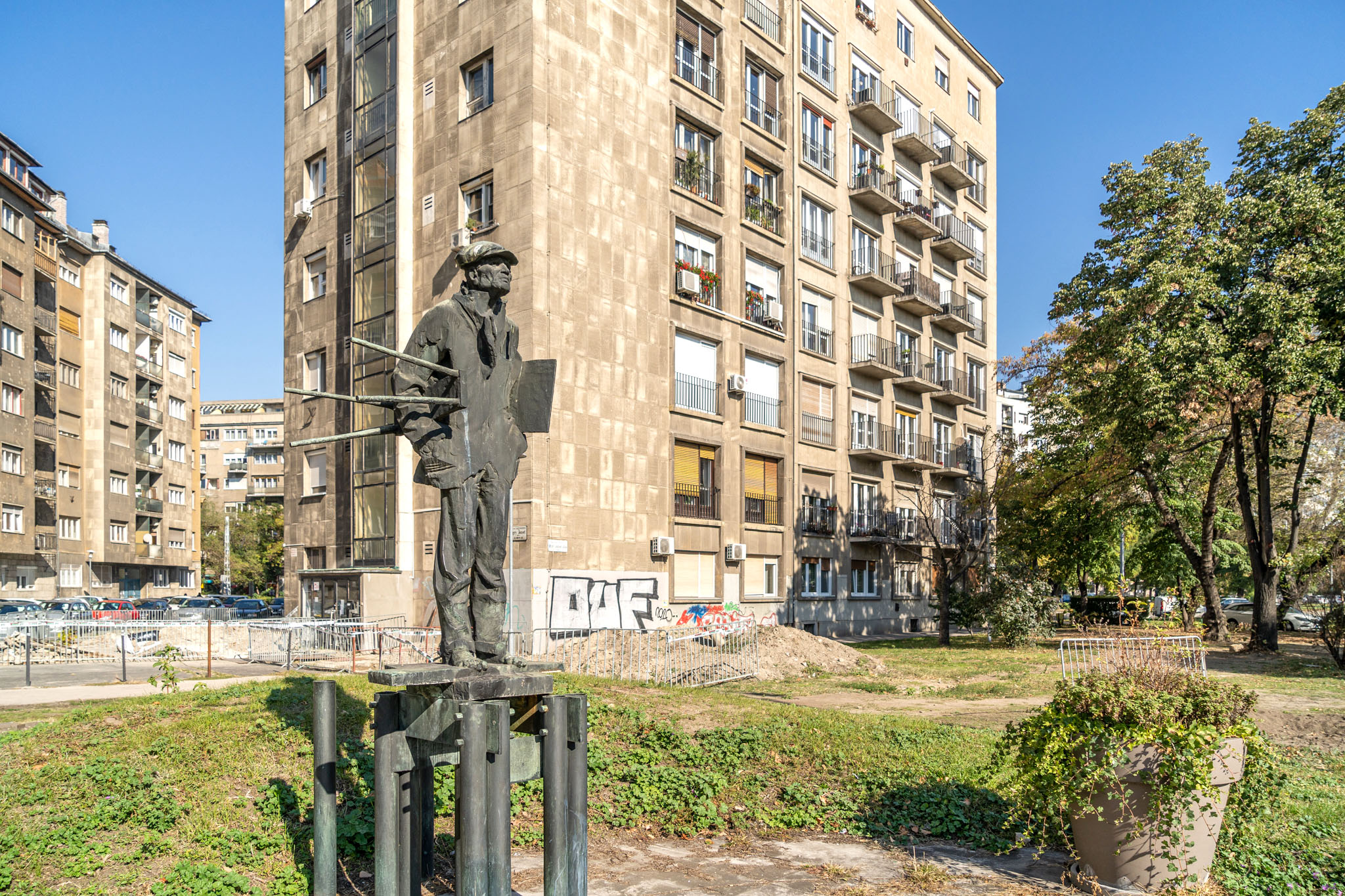 The full-lenght statue of József Egry is from the 9th District (Photo: Balázs Both / pestbuda.hu)
The full-lenght statue of József Egry is from the 9th District (Photo: Balázs Both / pestbuda.hu)It can be clearly stated with regard to the painters' monuments, the busts and plaques dominate. A significant group of the former is located on Margaret Island. The formerly independent southern tip of the green area, known as an inspiring place for artists, was called the Painting Island deliberately, which was annexed to the island between 1872 and 1875, during the construction of the Margaret Bridge, completed in 1876.
Today, on the Artist's Promenade, approximately between the ruins of the Dominican and Franciscan monasteries and the Nagyszálló, we can see the busts of seven significant painters. Among them, the romantic realist painter-prince Mihály Munkácsy (Munkács, 20 February 1844 - Endenich, 1 May 1900) is perhaps the most widely popular painter: his fame was also enhanced by Sándor Dallos' two-volume novel A nap szerelmese [The Lover of the Sun] and the Aranyecset [Golden Brush]. His bust made by Walter Madarassy in 1951 was transferred from the Városliget for the 1966 design of the promenade, as were the other two painter statues.
.The bust of Károly Ferenczy (Vienna, 8 February 1862 - Budapest, 18 March 1917), the founder of an artists' dynasty and the Nagybánya art colony, the outstanding master of plein air painting was made by István Tar (1959), and the bust of Gyula Rudnay (Pelsőc, 9 January 1878 - Budapest, 4 January 1957), belonging to the Great Plain school and the Postnagybánya style, is the work of his close friend, János Pásztor (1951).
The statue of Mihály Zichy was completed in 1966 (Zala, 14 October 1827 - St. Petersburg, 1 March 1906): the bust of the romantic artist, who opened a new era with his graphics and illustrations for literary works (Ballads of János Arany, Imre Madách: Az ember tragédiája), and was working in the courtyard of the Tsar, and was also respected by the Georgians as a national painter, was made by András Kocsis. The portrait by Pál Pátzay about the master of the expressive Dózsa cycle, Gyula Derkovits (Szombathely, 13 April 1894 - Budapest, 18 June 1934) was also inaugurated.
Bust of Mihály Zichy on the Margaret Island Artist's Promenade (Photo: Ifjúsági Magazin, 1 April 1974)
The portrait of the post-impressionist István Szőnyi (Újpest, 17 January 1894 - Zebegény, 30 August 1960), known for his landscapes in Zebegény, was shaped in 1967 by János Sóváry, and in 1972 a sculpture by Miklós Borsos of Miklós Barabás (Márkosfalva, 10 February 1810 - Budapest, Ferencváros, 12 February 1898), a portrait painter depicting the most famous Hungarian personalities of the 19th century, was added to the painter's pantheon.
Unfortunately, Erzsébet Schaár's 1974 work on Károly Kernstok (Budapest, 23 December 1873 - Budapest, 10 June 1940) belonging to the Eight Circle disappeared in 1990.
On the other hand, here is the statue of the art historian Károly Lyka (Pest, 4 January 1869 - Budapest, 30 April 1965), who also worked as a painter and restorer at a young age. Pál Pátzay's original 1977 work was stolen in October 1997 and was soon replaced by a copy that can be seen today. Of course, the sculptures shown here do not reflect a quality order, an aesthetic rating. Busts and reliefs in other parts of the capital also commemorate significant painters.
Of particular importance in the history of Hungarian painting is the Epreskert in the 6th District, which is known as a hangout of painter apprentices, that earlier belonged to the Mintarajztanoda, now to the Hungarian University of Fine Arts. Two founders of the Hungarian higher education, representatives of the romantic and academic branches, Károly Lotz (Bad Homburg vor der Höhe, 16 December 1833 - Budapest, 13 October 1904) and Bertalan Székely (Cluj-Napoca, 8 May 1835 - Cinkota, 21 August 1910) were commemorated here. A medallion-shaped bronze head relief on the wall of Lotz's former studio was made in 1905 by Alajos Strobl. The limestone statue of Bertalan Székely, inaugurated in 1936, is the work of Imre Osváth, a student of Zsigmond Kisfaludi Strobl.
A painter's memorial plaque on the wall of the two MÁV tenement houses of Kodály Körönd. The bronze relief by Miklós Borsos of the portrait of Pál Szinyei Merse (Szinyeújfalu, 4 July 1845 - Jernye, 2 February 1920), the creator of the Majális and the Lilaruhás nő, the founder of the Hungarian plan air style, was inaugurated in 1872 on the wall of a house at 2 on the street named after the painter (88-90 Andrássy Avenue - 3 Kodály körönd). 87-89 Andrássy Avenue, known as the Kodály House. Jenő Barcsay (Katona, 14 January 1900 - Budapest, 2 April 1988), who was connected to Szentendre, lived here once, and received a relief memorial plaque on this house. György Szász's work in 1998 recreated Barcsay's 1949 self-portrait, which - as a real creative solution - gives the impression of a face folded from reinforced concrete steel pieces.
Opposite Stefánia Park, at 10 Zichy Géza Street, a memorial plaque from 1990 with the self-portrait of Elek László Fülöp (Pest, 30 April 1869 - London, 22 November 1937), a world-famous portrait painter can be seen. He settled in London and captured - among others - the members of the English aristocracy. In 1897, the artist built the neo-Gothic-historian-eclectic “knight's castle” with László Gyalus as a studio house for himself, where Ferenc Molnár and Gizi Bajor later lived.
The Benczúr Street side of the house at 84 Dózsa György Road, at the mouth of the street, we can see the memorial plaque of Gyula Benczúr (Nyíregyháza, 28 January 1844 - Dolány / today Benczúrfalva /, 16 July 1920). In the composition of István Marosits, inaugurated in 1996, the portrait of the master known for his historical paintings, representing the style of historicism, is based on one of his masterpieces, the relief of his painting The Baptism of Vajk.
 The bust of István Szőnyi was placed next to the entrance of the Markó Street grammar school (Photo: Balázs Both / pestbuda.hu)
The bust of István Szőnyi was placed next to the entrance of the Markó Street grammar school (Photo: Balázs Both / pestbuda.hu)Among the artists already seen on Margaret Island, the authentic and impressive bust of Mihály Munkácsy was modeled by János Pásztor in 1906: it can be seen in the upstairs foyer of the Fészek Artists' Club. A memorial plaque with a portrait on Gyula Derkovits Népszínház Street 18, the 1965 work of László Csontos on the artist's former house. In Baross Street István Szőnyi received a memorial plaque on the wall of his former house at number 21 in 2009 - made by István Buda. The bust of Szőnyi at 18–20 Markó Street is the work of Imre Varga at the entrance of the János Xántus Bilingual Grammar School. It was originally inaugurated in 1973 at the János Bolyai Vocational High School of Textile Industry, and in 1978 it was moved to its current location.
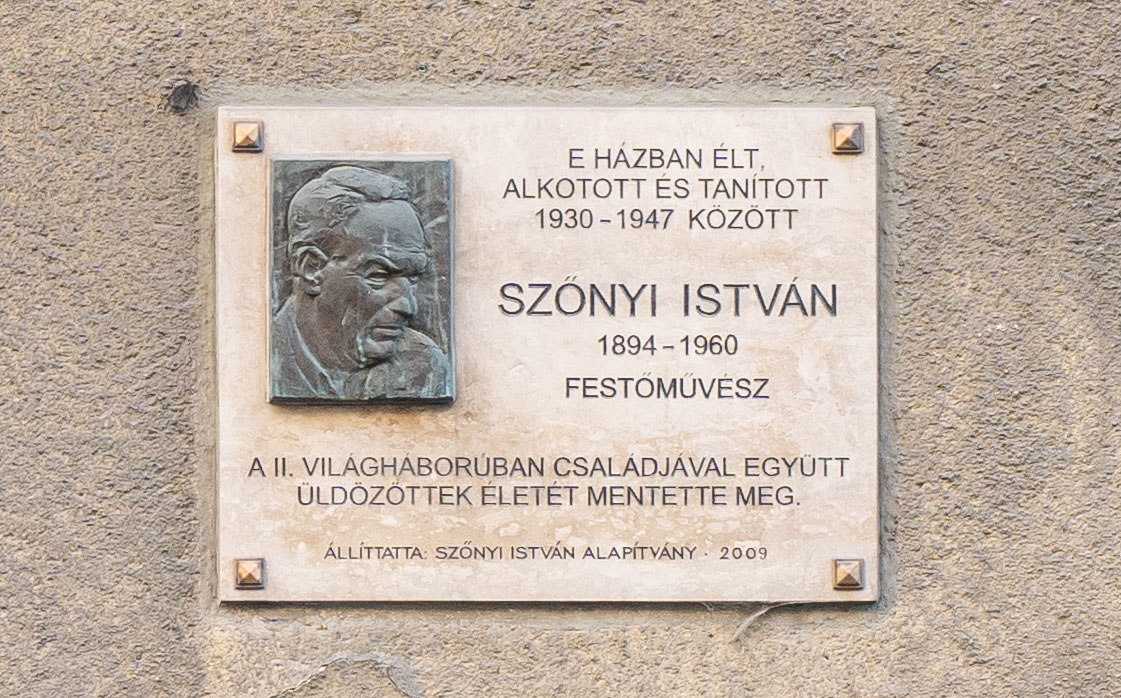 István Szőnyi's portrait on the wall of the house at 21 Baross Street (Photo: Balázs Both / pestbuda.hu)
István Szőnyi's portrait on the wall of the house at 21 Baross Street (Photo: Balázs Both / pestbuda.hu)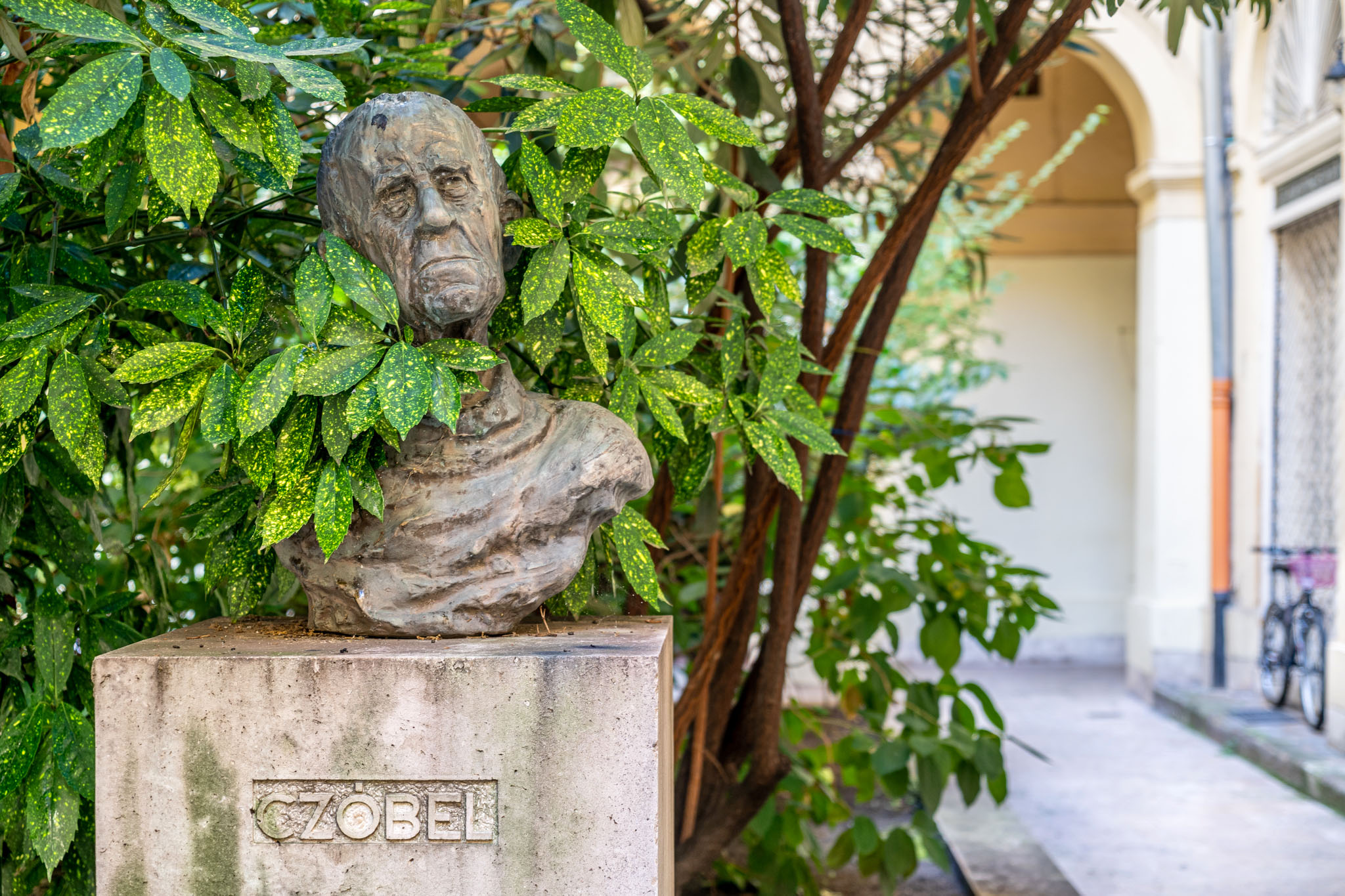 Bust of Béla Czóbel, 1983 by Imre Varga in the courtyard of the passage house on Sas Street (Photo: Balázs Both / pestbuda.hu)
Bust of Béla Czóbel, 1983 by Imre Varga in the courtyard of the passage house on Sas Street (Photo: Balázs Both / pestbuda.hu)Markó utca is named after the romantic landscape painter Károly Markó Sr. (Lőcse [Levoča], 25 September 1791 - Villa di Lappeggi, Italy, 19 November 1860): the 1941 relief memorial plaque by Jenő Kerényi conserves his memory on the wall of the house at number 26.
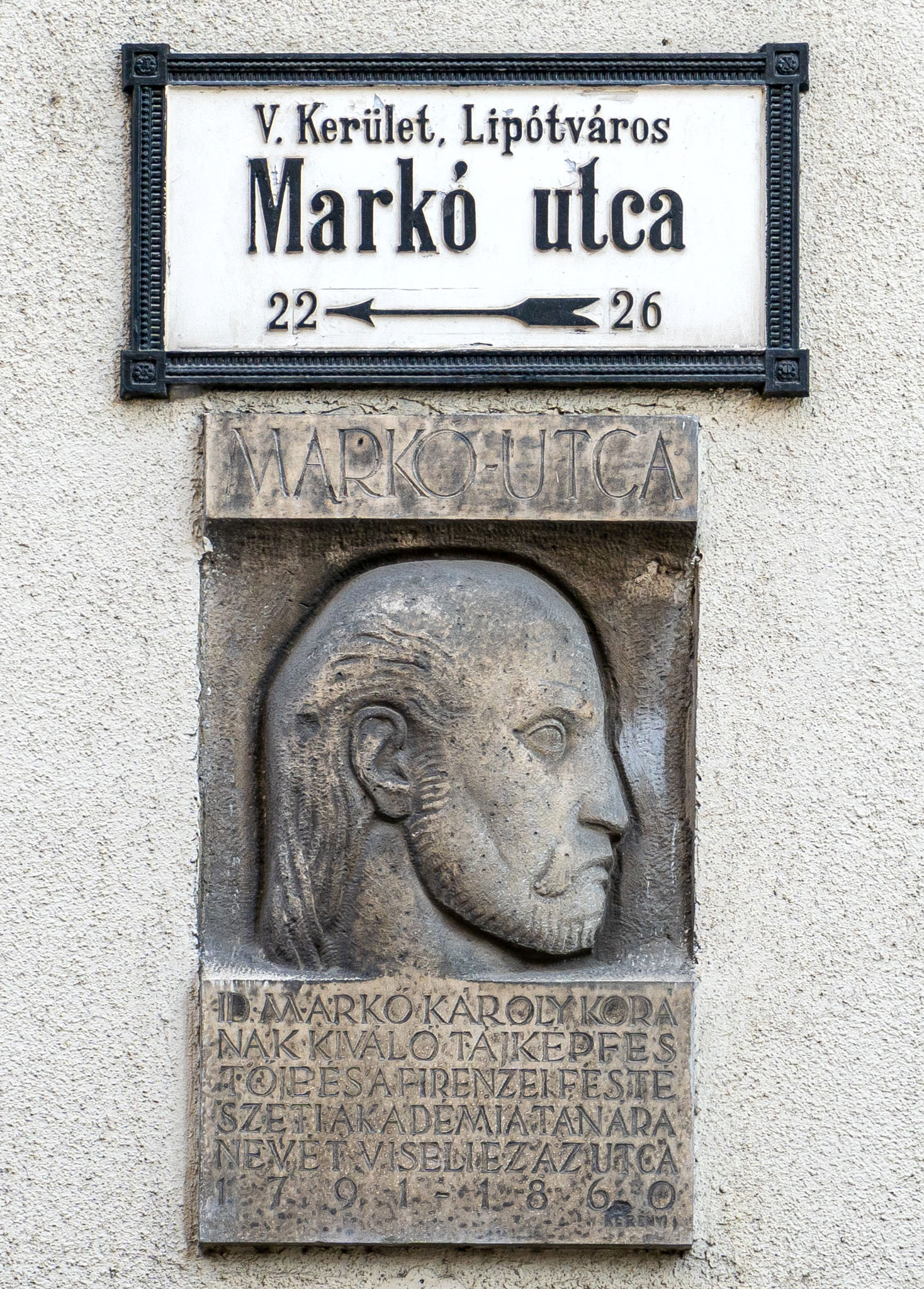
Behind the Lehel Market Hall, the relief memorial plaque of the leading figure of the Hungarian avant-garde, Lajos Kassák (Érsekújvár, 21 March 1887 - Budapest, 22 July 1967) by Miklós Borsos can be seen on his former residential building at 21 Bulcsú Street. It was originally erected in 1980 in the grammar school named after the painter. Following a recent school merger, it was moved to its current place in 2014.
In terms of the overall picture Buda lags behind Margaret Island and the Pest side in terms of the number of busts and reliefs of painters. The best known is the memorial plaque and relief of the Napút painter Tivadar Kosztka Csontváry (Kisszeben, 5 July 1853 - Budapest, 20 June 1919) by the artist István Lisztes, composition based on the painter's self-portrait from 1976, at 36-38 Bartók Béla Road.
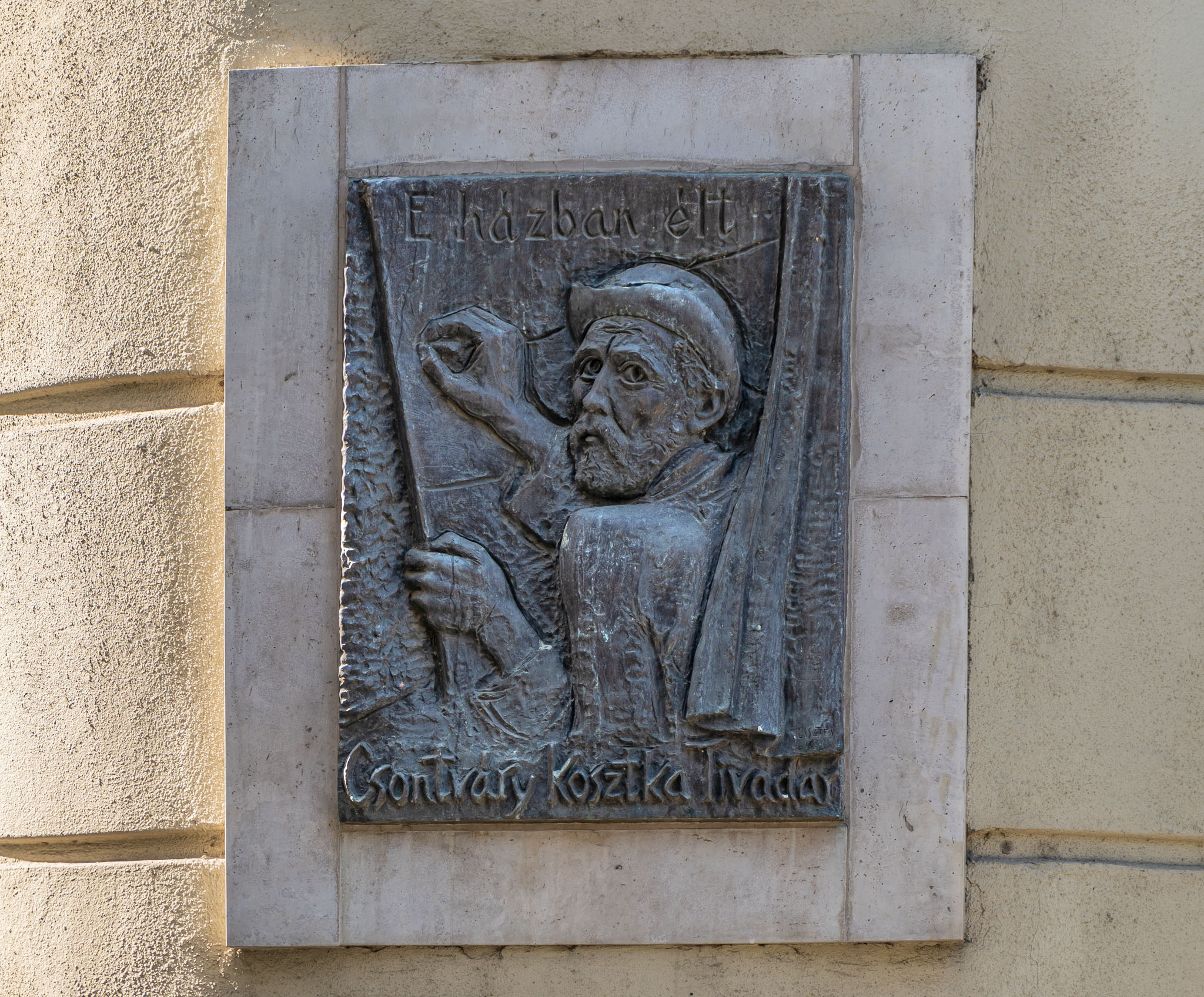 The relief depicting Tivadar Kosztka Csontváry is located at 36-38 Bartók Béla Road, made in 1976 based on the painter's self-portrait (Photo: Balázs Both / pestbuda.hu)
The relief depicting Tivadar Kosztka Csontváry is located at 36-38 Bartók Béla Road, made in 1976 based on the painter's self-portrait (Photo: Balázs Both / pestbuda.hu)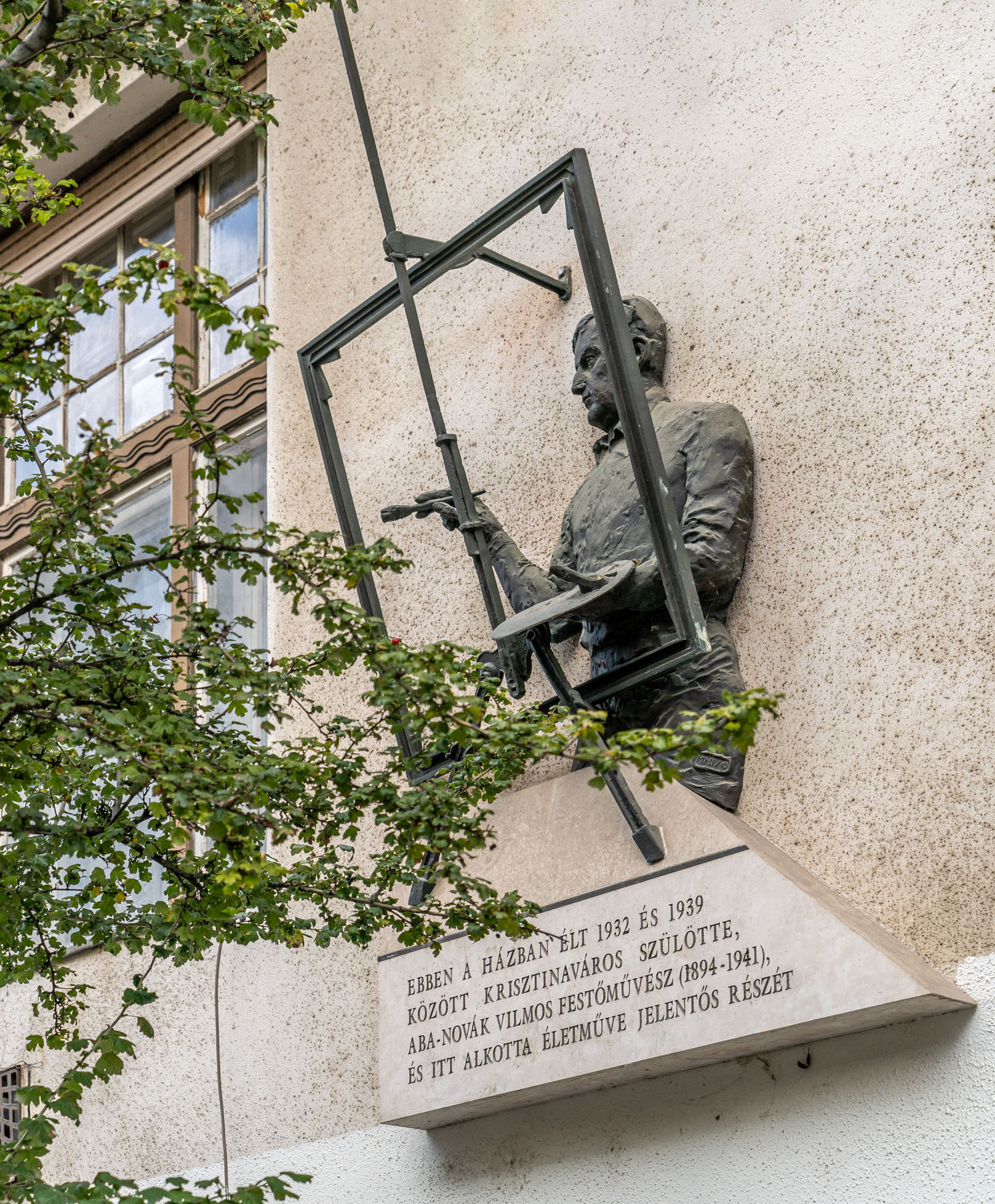 A very special work is the 2004 bas-relief of Iván Paulikovics depicting Vilmos Aba-Novák on the wall of the artist's former house in Zsolt Street, Krisztinaváros (Photo: Balázs Both / pestbuda.hu)
A very special work is the 2004 bas-relief of Iván Paulikovics depicting Vilmos Aba-Novák on the wall of the artist's former house in Zsolt Street, Krisztinaváros (Photo: Balázs Both / pestbuda.hu)The Hungarian Artists Day, which is the occasion for this summary, has been held since 2002 on the proposal of the Munkácsy Prize-winning painter Tibor Bráda. October 18 is the day of St. Luke the Evangelist, who is revered not only as a patron saint of doctors but also of painters. According to Catholic tradition, he is the creator of the image of Mary in the Basilica of Santa Maria Maggiore in Rome and the icon of the Black Madonna in Częstochowa.
Cover photo: Statue of Ignác Roskovics on the Danube Promenade, by Mihály Kolodko from 2014 (Photo: Balázs Both / pestbuda.hu)



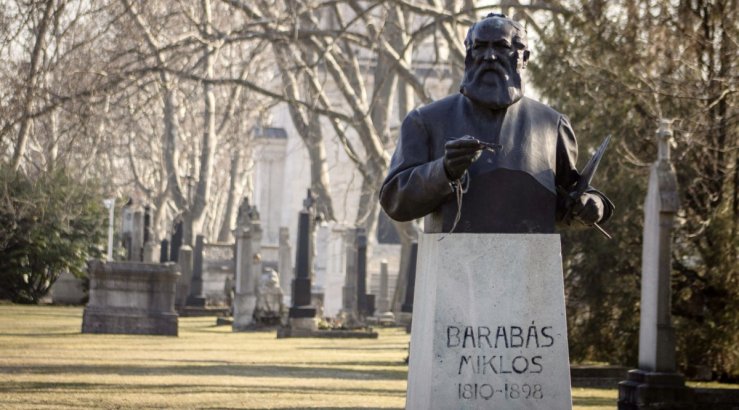
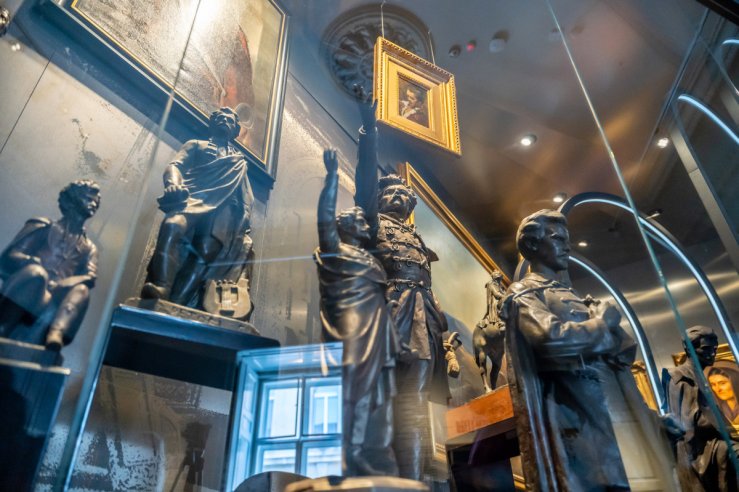

































Hozzászólások
Log in or register to comment!
Login Registration